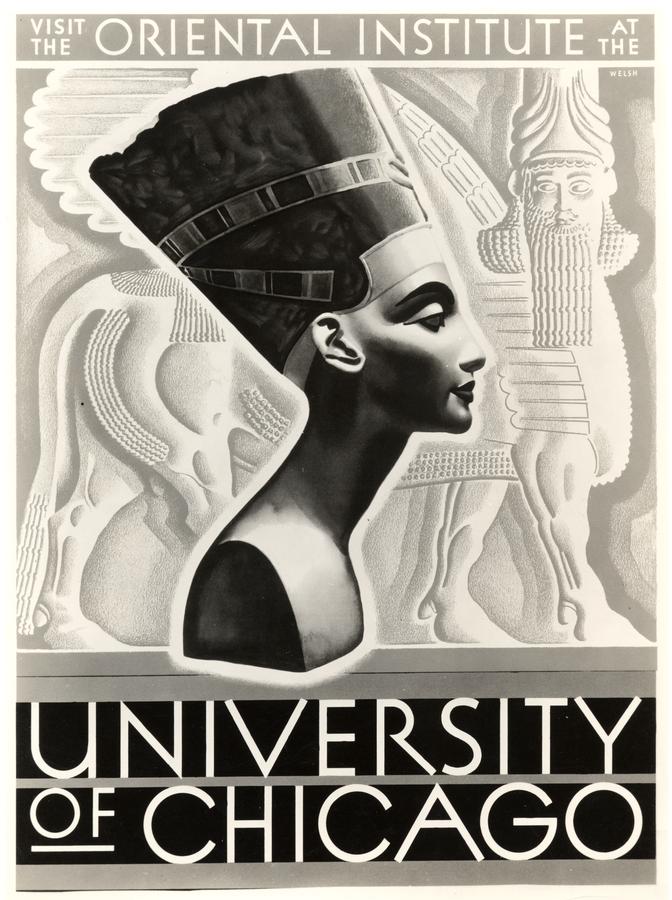University of Chicago News, December 22, 2009.

See the chronicle of news about the Oriental Institute.
The Oriental Institute has established a professorship in honor of the late Rita Picken, a long-time volunteer docent who, for three decades, shared her fascination with the ancient Near East with school children and adults visiting the Oriental Institute Museum.
The Rita T. Picken Professorship in Ancient Near Eastern Art will enhance the work of the Oriental Institute by adding a faculty member whose expertise in ancient art will complement the institute’s strengths in languages and archaeology, said Gil Stein, Director of the Oriental Institute.
The professorship is being established with a $3.5 million gift from Rita Picken’s daughter, Kitty Picken, who began volunteering with her mother in 1977.
“Rita Picken was a true friend of the Oriental Institute. She loved ancient art and artifacts, and shared her enthusiasm with many generations of adults and school children as a docent in our museum,” Stein said.
Rita and Kitty Picken also sponsored the Picken Family Nubia Gallery and the Oriental Institute’s recent special exhibition on the ancient Egyptian mummy Meresamun.
Rita Picken, who was a Life Member of the Oriental Institute’s Visiting Committee, received in May the Breasted Medallion, the highest honor the institute gives for a career of volunteer service.
“She was a person whose sweetness, gentle wit and sparkling eyes always brightened up the room. The Oriental Institute was like a second family for her, and we all will miss her greatly,” Stein added.
Modern scholars rely on three complementary kinds of evidence to reconstruct early cultures, Stein explained. Archaeologists study artifacts, “to tell us about ancient behavior and what people actually did.” Scholars also examine texts written by philologists and ancient historians, which “lets us hear these ancient people describe in their own words the details of how their societies worked,” said Stein.
The third method, which the Picken professorship will help support, is the study of images that “provides insights into the ideologies of ancient people―how they expressed power and piety through visual symbols,” Stein added. This crucial third piece of the puzzle for understanding ancient Near Eastern cultures will build on the Oriental Institute’s traditional strengths in archaeology and textual studies. The institute has not had an art historian on its faculty since 1985, when the late Helene Kantor retired.
“With the Rita T. Picken Professorship in Ancient Near Eastern Art, we will be able to bring back the study of images, giving us a truly holistic perspective on the ancient Near East. I don’t know of any other research center that will have all of these powerful approaches to studying the past united under one roof in an integrated program of research and graduate training,” Stein said.
“Different cultures in the ancient Near East were closely interconnected and they were the world’s earliest globalized societies, where art objects and art styles were the currency of prestige and power. Art objects were some of the most important goods of that time, and they were traded or given as royal gifts across vast distances,” Stein said.
“We hope to attract a scholar whose knowledge of the art of multiple ancient cultures, such as Mesopotamia and Egypt, would allow him or her to understand the complexity of visual symbols in this globalized ancient world,” said Stein.
Along with her daughter Kitty, Rita Picken joined the Oriental Institute as a docent in 1977, and the mother-daughter team also enrolled in classes. “The Oriental Institute became family for us,” said Kitty Picken.
“Part of what Rita enjoyed was the feedback she received from the fourth and fifth graders on her tours,” said Kitty Picken. “She would always ask them what they thought would still be around from our own civilization 1,000 years from now. They would tell her, ‘probably Tupperware bowls,’ but that the lids would not fit. Then she’d laugh and say that archaeologists might consider the lids religious symbols if they didn’t know what they were.”

See the chronicle of news about the Oriental Institute.





 Stumble It!
Stumble It!


No comments:
Post a Comment